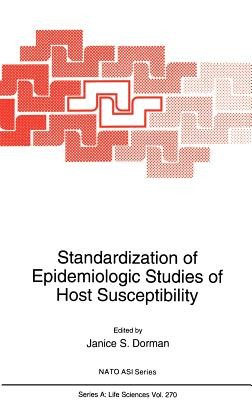
- We will send in 10–14 business days.
- Publisher: Springer
- ISBN-10: 0306448920
- ISBN-13: 9780306448928
- Format: 17.6 x 23.1 x 2.3 cm, hardcover
- Language: English
- SAVE -10% with code: EXTRA
Standardization of Epidemiologic Studies of Host Susceptibility (e-book) (used book) | bookbook.eu
Reviews
Description
The incidence of insulin-dependent diabetes mellitus (100M) varies dramatically across racial groups and countries, with annual age-adjusted rates of approximately 40/100,000 per year in Finland, but only 0.51100,000 per year in China. Although reasons for these marked geographic differences are unknown, it is likely that genetic variations across populations play a m or role. To determine the contribution of genetic factors to the global patterns of 100M incidence, international comparative studies are now being undertaken as part of the WHO Multinational Project for Childhood Oiabetes, known as the DIAMOND Project. It is, therefore, necessary to develop and implement epidemiologic standards for these investigations which can be applied across populations. This will ensure that comparable data are obtained in all countries, and that relevant scientific questions can be properly addressed. The development of standards for molecular epidemiologic studies of 100M is the of the NATO Advanced Research Workshop. During this meeting at the objective University of Pittsburgh, scientists from across the world convened to discuss issues relating to the standardization of: 1. the collection of family history data to assess the risk of 100M in first degree relatives, 2. case-control molecular epidemiology studies of 100M susceptibility, 3. HLA family studies, 4. laboratory methods and ONA technology transfer for genetic marker evaluations.
EXTRA 10 % discount with code: EXTRA
The promotion ends in 17d.21:49:29
The discount code is valid when purchasing from 10 €. Discounts do not stack.
- Publisher: Springer
- ISBN-10: 0306448920
- ISBN-13: 9780306448928
- Format: 17.6 x 23.1 x 2.3 cm, hardcover
- Language: English English
The incidence of insulin-dependent diabetes mellitus (100M) varies dramatically across racial groups and countries, with annual age-adjusted rates of approximately 40/100,000 per year in Finland, but only 0.51100,000 per year in China. Although reasons for these marked geographic differences are unknown, it is likely that genetic variations across populations play a m or role. To determine the contribution of genetic factors to the global patterns of 100M incidence, international comparative studies are now being undertaken as part of the WHO Multinational Project for Childhood Oiabetes, known as the DIAMOND Project. It is, therefore, necessary to develop and implement epidemiologic standards for these investigations which can be applied across populations. This will ensure that comparable data are obtained in all countries, and that relevant scientific questions can be properly addressed. The development of standards for molecular epidemiologic studies of 100M is the of the NATO Advanced Research Workshop. During this meeting at the objective University of Pittsburgh, scientists from across the world convened to discuss issues relating to the standardization of: 1. the collection of family history data to assess the risk of 100M in first degree relatives, 2. case-control molecular epidemiology studies of 100M susceptibility, 3. HLA family studies, 4. laboratory methods and ONA technology transfer for genetic marker evaluations.


Reviews